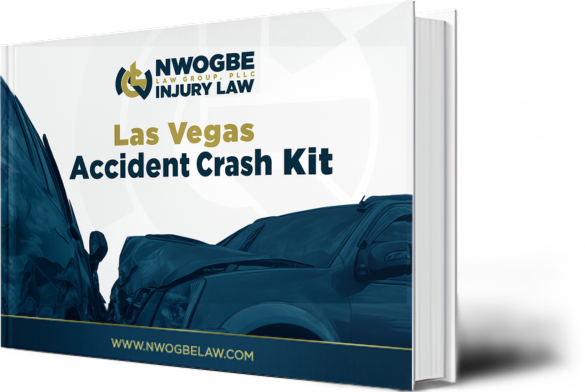Holidays are a time of celebration, reunions, and travel—but they also bring a spike in road hazards. Across the U.S., traffic collisions and fatalities tend to climb during holiday periods. The combination of increased vehicles on the road, driver distractions, fatigue, impaired driving, and unpredictable weather creates a higher-risk environment. For residents of Las Vegas and elsewhere, understanding why holidays contribute to crash rates is essential to staying safer and protecting your legal rights.
At Nwogbe Law, we help victims of holiday-related car accidents understand their rights and pursue full compensation. This article breaks down the key factors behind holiday crash spikes, what to watch out for, and how to minimize your risks—and after an accident, how to act to preserve your claim.
Why Holidays See More Collisions
1. Surge in Traffic Volume
During major holidays, millions of additional drivers hit the road. Long-distance travel, day trips, shopping runs, and festive gatherings drive traffic density to peak levels. More cars on highways, interstates, and local streets raises the probability of collisions simply by volume.
According to analysis covering 2018–2022, holidays were 13.9% more dangerous than non-holidays, with average daily traffic fatalities rising from 108 on normal days to 123 during holidays.
2. Fatigue, Distraction & Rushed Driving
Many holiday drivers cover long distances in tight timeframes, often through late nights or early mornings. Fatigue slows reaction time. At the same time, distractions—navigation devices, trying to beat traffic, switching music, checking for accommodations—compete for attention. Impatience also increases, with drivers more likely to speed, tailgate, or take unsafe passes in an effort to reach destinations quickly.
3. Alcohol & Impaired Driving
Holiday celebrations often include alcohol. Sadly, a higher share of holiday crashes involves impaired drivers compared to non-holiday periods. Between 2018 and 2022, nearly 37.4% of fatal holiday crashes involved alcohol impairment—versus ~29.4% for non-holiday crash fatalities. Reports show that during major holidays, the proportion of alcohol-related traffic deaths is even higher.
4. Unfamiliar Routes & Seasonal Conditions
Many drivers on holiday are outside their usual routes, unfamiliar with local traffic patterns, shortcuts, or hazards. In addition, seasonal challenges—winter ice, early dusk, rain, glare from holiday lighting, or sun angles—intensify risk. Decisions in unfamiliar surroundings can be delayed or incorrect under stress.
5. More Pedestrians & Parking Lot Risks
Holiday shopping, festive events, and family gatherings significantly increase pedestrian traffic, parking lot congestion, and crossing activity. Cars turning in driveways, parking maneuvers, sudden stops—all contribute to typical collision zones near malls, restaurants, and event venues.
6. Increased Multi-Vehicle & Chain-Reaction Crashes
With more vehicles, narrow spacing, heavier traffic, and variable speeds, one minor error can cascade into multi-vehicle pileups. Chain reactions are more likely when visibility is lowered or reaction times lag.
Patterns & Statistics You Should Know
- The National Safety Council (NSC) estimates that on Memorial Day weekend, for example, traffic deaths increase: some years by 10% above comparable non-holiday periods.
- On Independence Day holidays, fatality estimates regularly reach hundreds, aligned with heavy travel and impairment risks.
- Across holidays, drunk driving is implicated in 36–42% of traffic fatalities, compared to ~31% in non-holiday periods.
- The volume of holiday traffic significantly amplifies baseline crash rates.
Though these are national figures, Las Vegas sees its share of holiday crash activity. In 2023, five people died in four separate collisions over a 12-hour holiday period in the Las Vegas area.
How Holiday Traffic Risks Manifest on the Road
When holiday conditions combine, here’s how collisions most often occur:
- Rear-end and tailgating accidents due to sudden braking or varying speeds
- Side-impact (T-bone) collisions at intersections occur when drivers misjudge gaps
- Merging and lane-change crashes occur when traffic is dense and drivers miscalculate
- Pedestrian or crosswalk collisions at shopping centers, parking lots
- Multi-vehicle chain crashes following a sudden event
- Impaired-driving wrecks due to speed, inattention, or refusal to yield
If you travel during a holiday, these are the moments to stay especially alert.
Proactive Strategies to Stay Safe on Holiday Roads
- Plan your route & time wisely
Avoid peak departure hours. Use navigation apps to track traffic flow and know alternate paths. - Schedule ample rest & breaks
Take frequent intervals. Rotate drivers when possible. Fatigue is a leading hidden factor in holiday crashes. - Drive defensively & maintain buffer zones
Keep extra distance, anticipate erratic moves, avoid aggressive lane changes, and drive at safe speeds for conditions. - Avoid driving impaired
If celebrating, designate a sober driver or use a rideshare. Never drive after drinking. - Be cautious in parking lots & pedestrian zones
Scan for foot traffic, check all directions before backing up, and reduce speed drastically in congested areas. - Use caution in unfamiliar areas
Slow down, watch road signs, and observe posted speed changes. Local driver norms may vary. - Stay alert after holiday distractions
Don’t let gift lists, phone calls, or multitasking tempt you. Focus fully on driving.
What to Do If You’re in a Holiday Traffic Crash
Even with precautions, accidents happen. Acting correctly afterward is essential for safety and protecting your legal claim:
- First, check for injuries and call 911.
- Move vehicles safely out of the flow if possible, and turn on hazard lights.
- Document the scene thoroughly: take photos of vehicle positions, damage, skid marks, road signs, traffic patterns, weather conditions, and surroundings.
- Collect witness names and contact details. Eyewitness statements are often stronger when gathered immediately.
- Exchange information with other drivers: full name, license, registration, insurance company, policy number, vehicle make/model, and VIN if possible.
- Report the crash to your insurer—but limit your statement to the facts without admitting fault.
- Contact an experienced Las Vegas car accident attorney right away. Legal guidance is particularly important during holiday crashes when multiple parties or contributing factors may be involved.
- Save all medical records, vehicle repair estimates, and communication with insurers.
- Avoid social media comments about fault or injuries—they can be used against you.
- Let your attorney navigate negotiation, documentation, and any litigation or settlement efforts.
Frequently Asked Questions
1. Why are holidays more dangerous for driving?
Holidays bring more cars on the road, driver fatigue, distractions, impaired driving, unfamiliar routes, and pedestrian crowding—all combining to elevate crash risk.
2. How much higher is the risk during holidays?
Data shows that fatalities during holidays increase about 13.9% over non-holiday periods on average.
3. Can I still get compensation if the holiday traffic was heavy?
Yes. Heavy traffic doesn’t absolve fault. If another driver acted negligently, you still may have a valid claim. Complex holiday factors make legal representation especially important.
4. What makes holiday crash cases different legally?
More factors may be involved—multiple parties, contributions of impairment or fatigue, municipal or road design liability, eyewitness inconsistencies, or delayed medical injuries.
5. How soon should I reach out to a lawyer after a holiday crash?
As soon as possible—ideally within 24 to 72 hours. Early lawyer involvement helps preserve evidence, shape your claim, and ensure insurers don’t exploit confusion from holiday timing.
Conclusion
The holiday season may bring joy—but it also brings elevated hazards on the road. Spiking traffic, impaired drivers, fatigue, distractions, and pedestrian density all form a dangerous mix. Educating yourself, driving defensively, and responding swiftly after a collision are key to protecting your health and rights.
At Nwogbe Law, we specialize in holiday injury and collision cases in Las Vegas. If you or a loved one has been involved in a crash during a holiday, reach out through our Contact us for a free case evaluation and strong advocacy.





